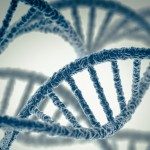Présentation
Translation involves four main steps: initiation, elongation, termination and recycling. Each step is highly controlled and can be modulated depending on the mRNA characteristics. The first step begins with the binding of eIF3 to the 40S subunit to form the 43S preinitiation complex, which scans the 5’UTR and unwinds potential secondary structures. After the recruitment of the 60S at the AUG start codon, the ribosome moves forward on the mRNA and synthesizes the protein. When it encounters a Stop codon, termination occurs. This step involves the eRF1 and eRF3 release factors, which recognize a stop codon in the ribosomal A-site. It is followed by the dissociation of the two ribosomal subunits into free 60S and 40S particles, allowing the recycling of ribosomal subunits. The efficiencies of these different steps can extensively vary from one mRNA to another. Accessory factors have been found that can facilitate translation on mRNAs being intrinsically inefficiently decoded by the basal machinery.
In the case of aberrant non-stop peptide translation, two factors, Dom34 and Hbs1, which are homologous to eRF1 and eRF3 respectively, recognize the ribosomal empty A-site. Together with the release factor Rli1, they induce the dissociation of the 60S particle, which retains the aberrant nascent peptide stalled in the exit tunnel (Defenouillère et al., PNAS. 2013), and of the 40S particle associated to the aberrant mRNA. In addition, it was recently shown that unrecycled 80S ribosomes can accumulate in the 3’UTR of yeast genes (Guydosh and Green, Cell. 2014). Some of these ribosomes scan the 3’UTR without translation and some others can reinitiate translation and produce small peptides (Young et al., Cell. 2015). This new pathway remains to be characterized and the mechanisms involved in this process remain to be described.
We recently identified a new protein, which we named Tac4, associated to the ribosome. This protein shows some homologies to DHX29, a mammalian factor suggested, based on in vitro analyses, to help in the scanning of structured mRNAs. Our preliminary results show that Tac4 is associated with the 40S subunit and possibly also with the 3’-UTR of mRNAs. At least two hypotheses are thus possible i) Tac4 is involved in the unwinding of secondary structure during the first step of translation, as in mammalian cells; ii) Tac4 in involved in the recycling of ribosomes.







